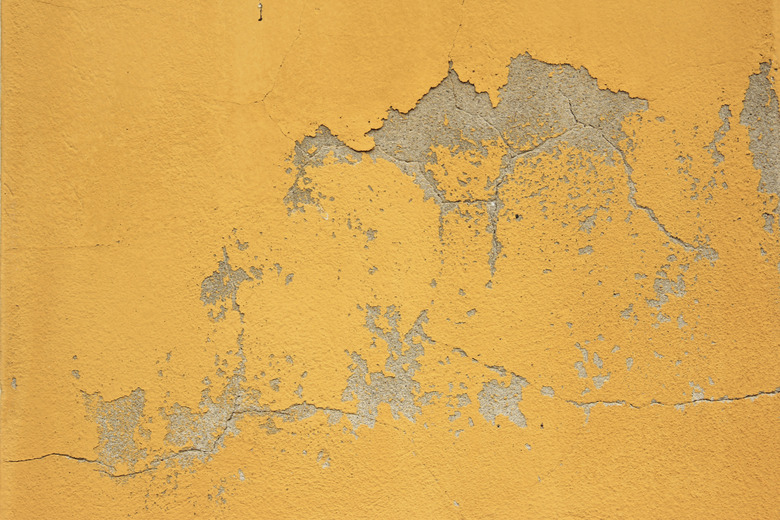The Best Paint Finish To Hide Wall Imperfections
Paint your imperfect walls to hide their flaws under a wash of new color — or take some time to emphasize the age and wear on the walls to add character to a room. It's all in the flick of a brush, rag or roller, and the finish of the paint you use. Flat is your friend when wall surfaces are not cooperating.
Paint Finishes
Paint Finishes
Paint finishes are rated dull to glossy, and the one you choose matters when you're trying to hide a less-than-pristine wall. The flatter the finish, the more light it absorbs, and the less you notice any cracks, bumps, depressions or rough spots. Matte finish will hide the most damage; look for flat paint and buy a quality brand with good coverage to even out slight imperfections on the walls. Low-luster finishes minimize flaws on the surface of the walls — these are branded eggshell and satin finish, and they have very little shine. In bright light, they will show problems with the underlying wall, but you can wash eggshell and satin paints. Semi-gloss and gloss are the shiniest finishes, suitable for high-traffic areas, bathrooms and kitchens. Glossy finishes gleam on the walls and highlight imperfections.
Faux-Texturing
Faux-Texturing
Paint lets you make magic with techniques to simulate a variety of textures on the wall. These theatrical finishes incorporate imperfections as part of their "authentic" charm, or simply render them invisible. Color-washing, an uneven film of two or more shades of paint brushed on and partly wiped off the wall, has a very Old World effect. Stippling, rag rolling, sponging, and painting faux stones or bricks are different ways to hide rough patches or damaged areas of wall.
Stucco and Plaster
Stucco and Plaster
Real plaster finishes that work like the final coat of paint put actual texture on the wall as they transform your dull dining room into the refectory of a Venetian villa. Stucco or plaster finishes may be tinted with pigments to match your choice of paint color and applied with a trowel, putty knife or roller. Using colored plaster rather than painting over a textured plaster finish ensures the color won't chip, scrape or peel off, even if the wall takes some abuse. Southwestern and Spanish Colonial homes are naturals for textured paint, but you can adapt the imported Italian technique to any architectural style, if you keep it subtle.
Stencils and Scenery
Stencils and Scenery
You can't — or don't want to — spring for skim-coating the walls with smooth new plaster. But a couple of coats of flat latex aren't going to hide all the flaws, which is perfectly fine because you're going to make those flaws disappear by drawing more attention to them. Paint the offending wall or walls with solid matte paint. Then choose a contrasting color and stencil a design right over the worst of the wall. A straight line of Tibetan sacred symbols marching across a rich pink wall in metallic gold paint transports you from your shabby studio to exotic Asia. A flock of blackbirds soaring toward the ceiling over the ice-blue wall is an irresistible distraction from that persistent crack. Paint an entire mural over a wall that won't be wrangled into submission. The skyline of Paris is a painted fantasy that makes your wall simply perfect.
